First released in 2001, The Anime Encyclopedia has long been a mainstay of many an anime fan’s bookshelf. Now, 14 years later, comes the third edition: 2kg and 1160 pages covering anime from its genesis to the summer of 2014.
That is a lot of anime — and it even includes a staggering amount of entries for “hentai” (Japanese animated pornography). However, while meaty to be sure, it is by no means a full list of all anime ever created. There are even quite a few from recent years that are unexpectedly missing.
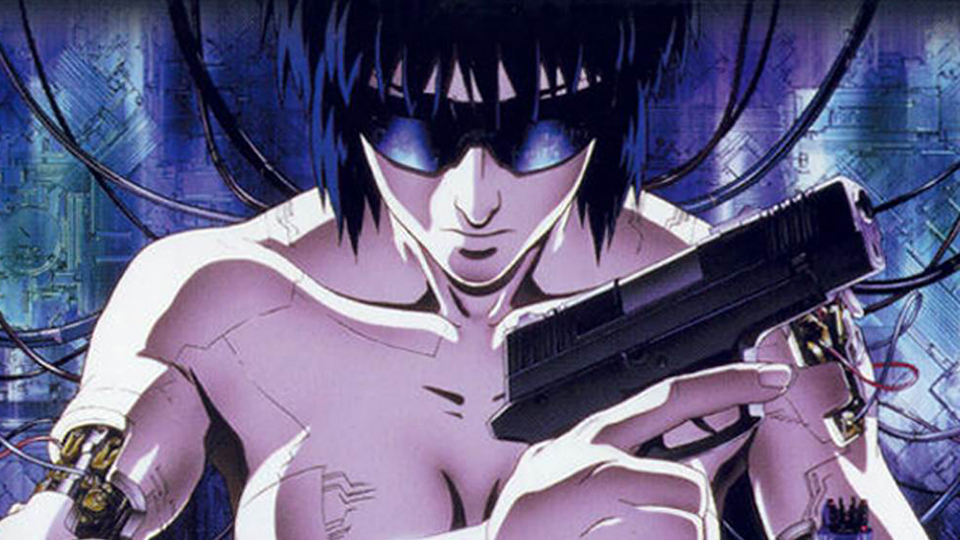
Each entry begins with the basic information of a given series: alternate titles, prominent staff members, and airdate. This is followed by a basic summary of the anime that introduces the setting, main characters, and genre of the anime. While some entries — especially those about obscure older titles or pornographic ones — end there, many contain fascinating behind-the-scenes information about the anime’s creation and/or popularity in Japan and abroad. Some entries include short reviews of the series, with comments on the anime’s quality as a piece of fiction as well.
Nested throughout the anime entries are brief entries on prominent people and studios in the anime industry. These are part biography, part filmography and act as a great resource for finding similar anime to those you already enjoy.
The most enjoyable part of The Anime Encyclopedia, however, is the series of short essays spread throughout. A mix of history and sociological analysis of anime fan culture, these lengthy entries cover everything from fandom to a short history on the earliest animations made in Japan. They make great inroads exploring not only how anime and its surrounding culture came to be but also why it did.
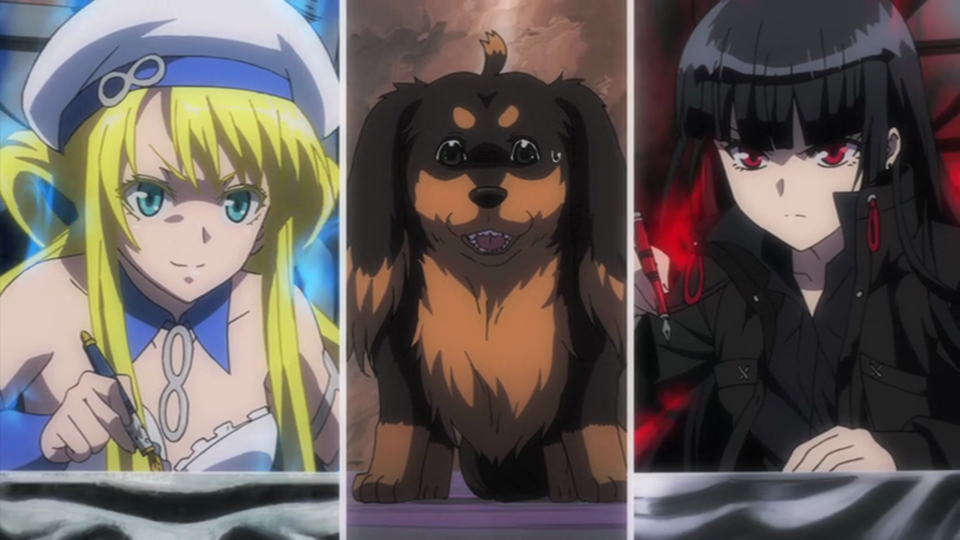
Though The Anime Encyclopedia is full of useful and interesting information, it has more than its fair share of factual errors to be sure — especially in the summary sections. As it would be impossible for the authors to have watched every single anime in the encyclopaedia — the authors note in the forward that this feat would take over 20 years of non-stop watching to accomplish — it seems like they have made use of secondary sources from across both published works and the internet.
Unfortunately, as I have learned myself through making our anime guides each season, even official information (especially pre-release information) is purposely vague or simply incorrect in many cases. Thus, I am forgiving when I come across such an error in the summary of a relatively obscure anime.
However, similar errors also appear in descriptions of tremendously popular anime — anime with complete and detailed summaries readily available in English. Something like that actively makes you wonder just how much of what you are reading is actually correct.
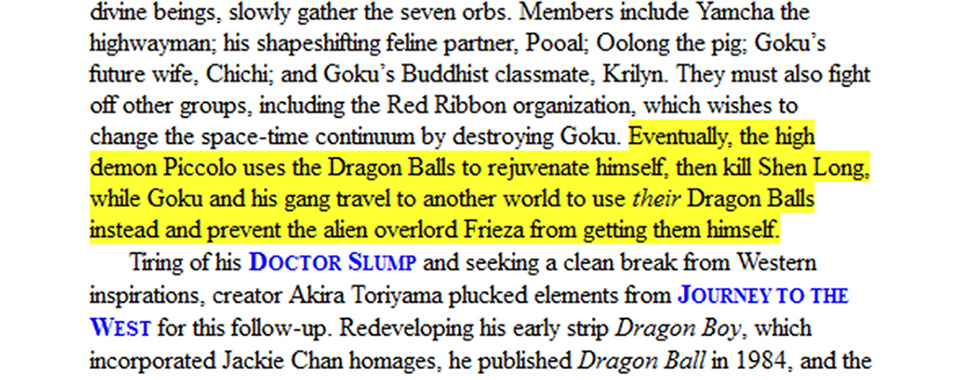
In the case of Dragon Ball, while King Piccolo (not to be confused with Piccolo Jr.) does kill Shen Long, the dragon is restored by Kami after King Piccolo’s defeat. The trip to an alien world and the encounter with Frieza happen in separate and completely unrelated incident during sequel anime, Dragon Ball Z.
On the positive side, the authors do make a show of good faith by stating upfront that there will be errors (and give an email address where corrections can be sent). They also assure that updates and corrections will be made to the online edition.
An interesting facet about The Anime Encyclopedia is the tone of its writing. The simple stating of facts you’d probably expect in an encyclopaedia is there, but summary and review sections of entries often contain more than a little of the author’s personality and humour in the form of snide remarks.

For the most part, this sense of levity makes the encyclopaedia less stale and more enjoyable to read. However, it becomes more problematic at times when the authors are mocking the quality of an anime they clearly have not seen (as can be inferred by basic plot summary errors). It makes what is written seem more than a little disingenuous and unfair to the work in question.
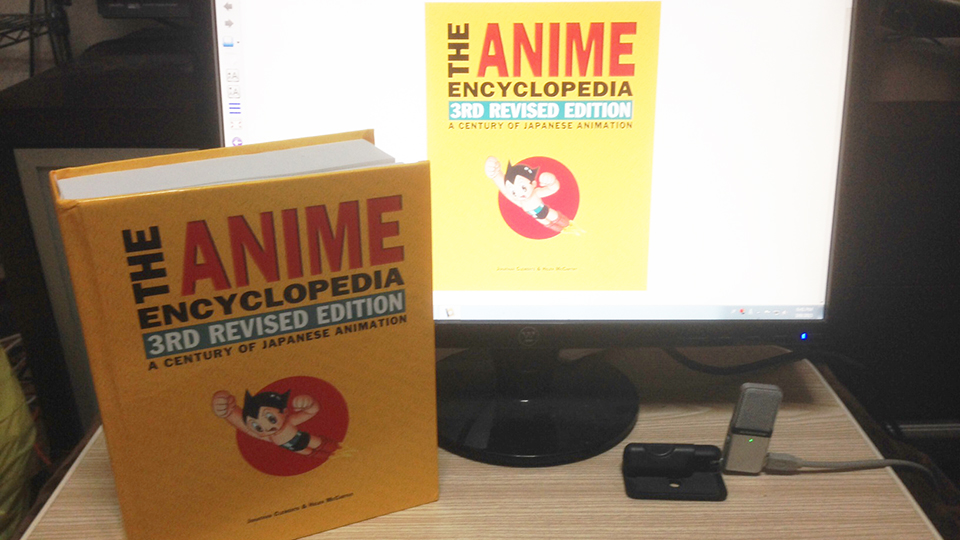
The Anime Encyclopedia 3rd Edition is an ambitious work to say the least. It attempts to be the definitive guide to anime from the very inception of film in Japan through the present day. It is full of interesting behind-the-scenes information on anime ranging from the famous to the forgotten; and the essays give an insightful look at anime history and culture. It is a remarkably good effort, though one admittedly plagued by errors throughout. And with the existence of the various anime wikis on the net containing much of the same information, this book really is more novelty than necessity.
There are two ways to get your hands on The Anime Encyclopedia 3rd Edition: (1) as an ebook and (2) as a massive bound hardcover. For ease of use, the ebook is far better — peppered as it is with links to related entries both within the encyclopaedia and across the internet. It’s deceptively easy to get lost for hours jumping from series to series.
As for the nearly 1160-page hardcover version, there is just something captivating about a giant book on your coffee table. Or a giant book as your coffee table.
The Anime Encyclopedia 3rdRevised Edition: A Century of Japanese Animation was released on March 3, 2015.
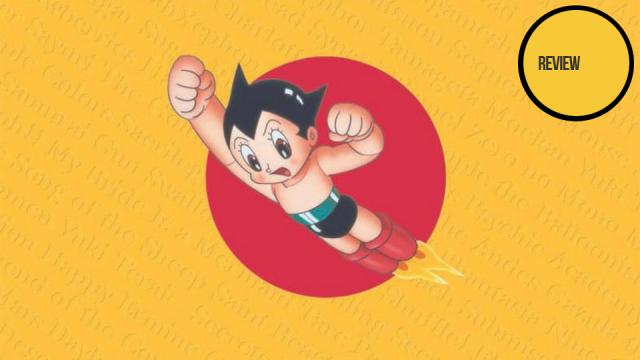
Comments
3 responses to “The Anime Encyclopedia 3rd Edition: The Kotaku Review”
I’ve bought the first and second editions in the past; both were excellent, and the snarky comments are in some ways the best parts (not that I always agree). There ARE occasional issues with accuracy and some baffling missing entries in the second edition (as I recall) so I’m not surprised there are some in the third.
Getting the e-Book version is a no-brainer unless you want to share it around – buying from Amazon, the paper tome costs $120 whereas the Kindle edition is (currently) under $10 (both USD, I believe). At $10, it’s a steal – even the second edition paper version was $80 or so, and you won’t find a more definitive work on anime in print.
Of course, there are several SITES with a better overview of the field – Wikipedia has many entries for example – but many entries for older anime tend to be pretty skimpy
MyAnimeList or AnimeNewsNetwork are pretty good resources too.
Very much so.
The main advantage of the book is it’s much handier if, for any reason, you’re forced offline for a while. (Breaks out in a sweat.)